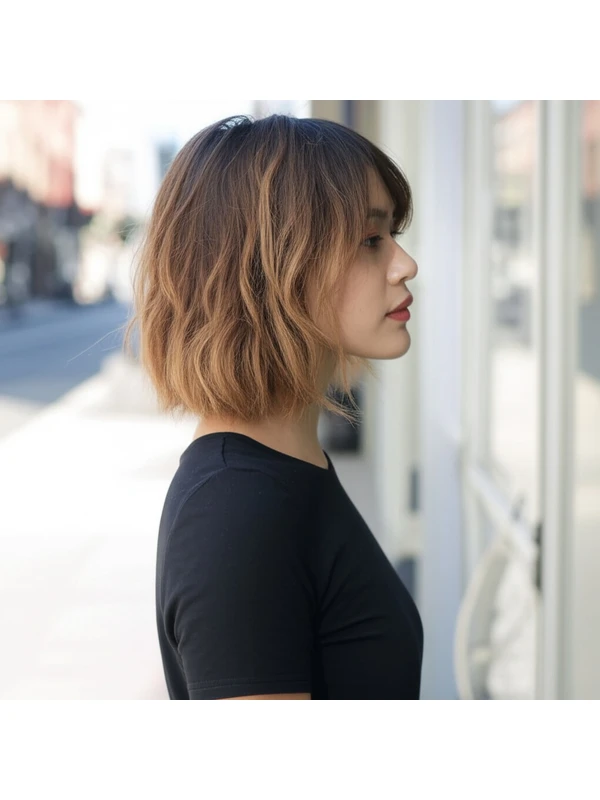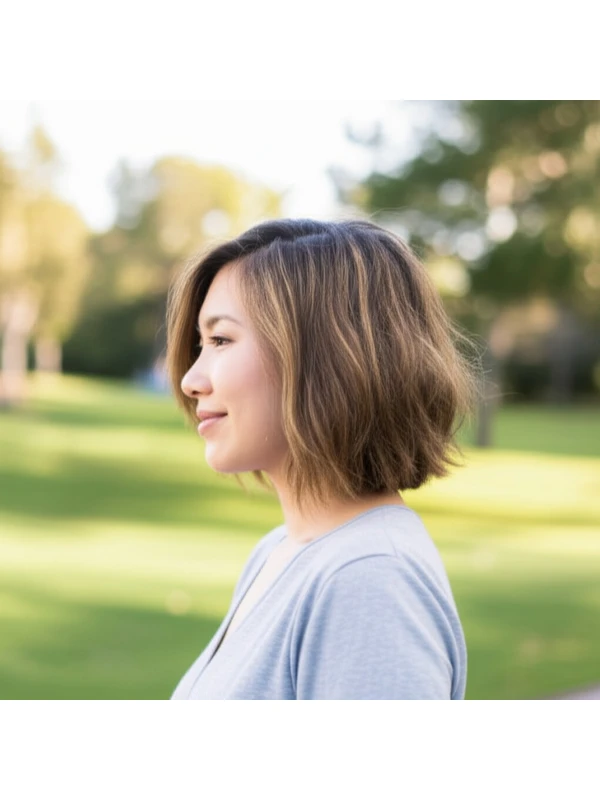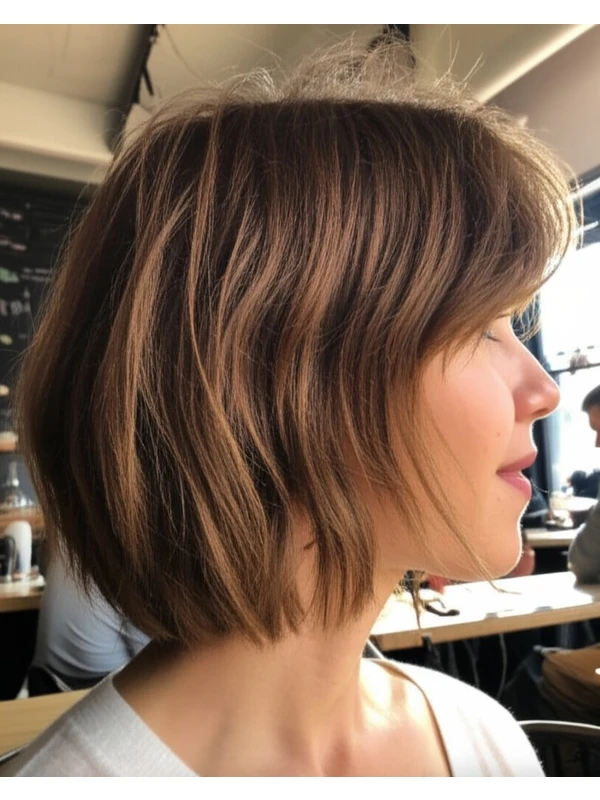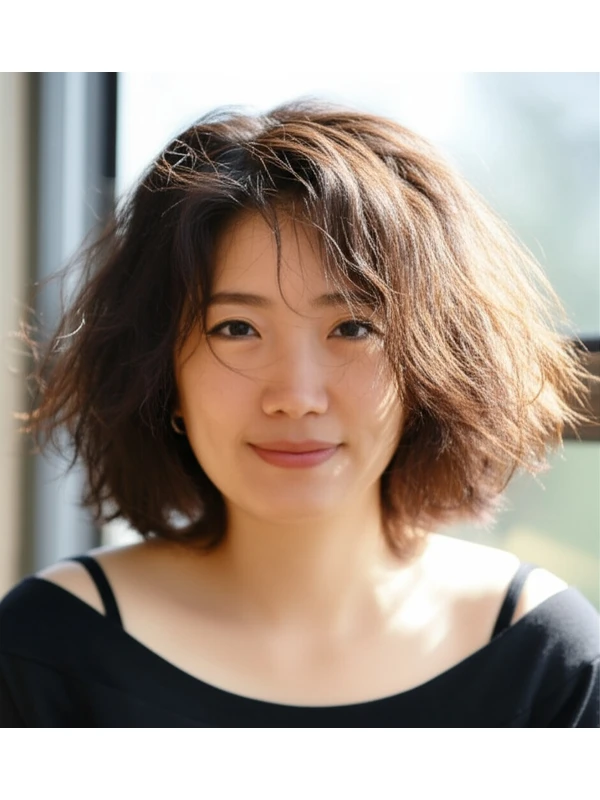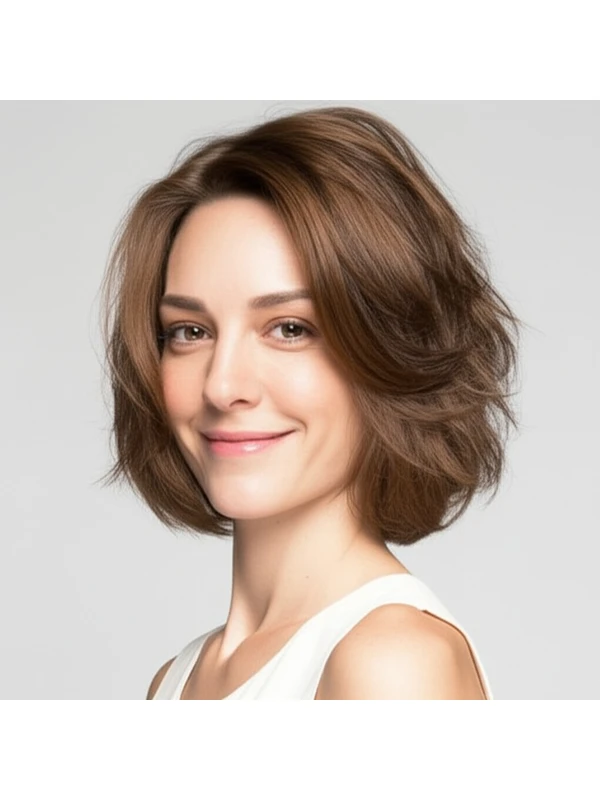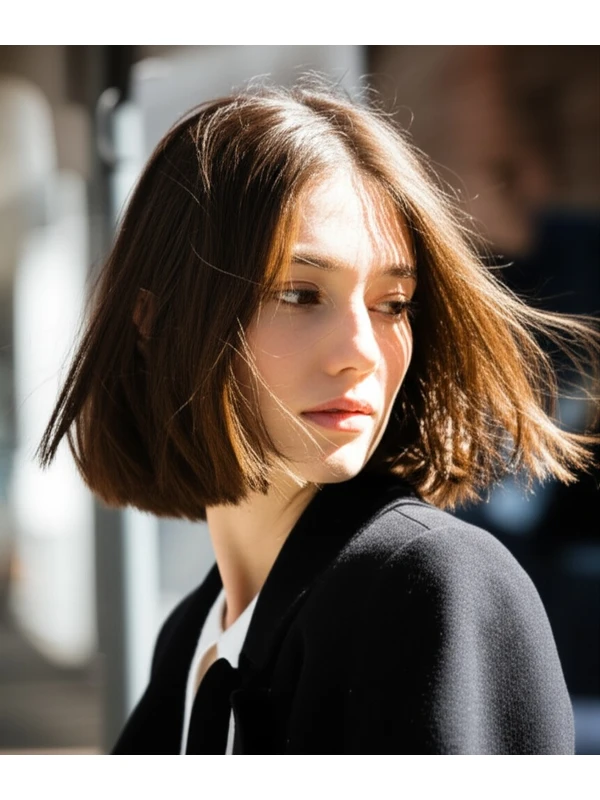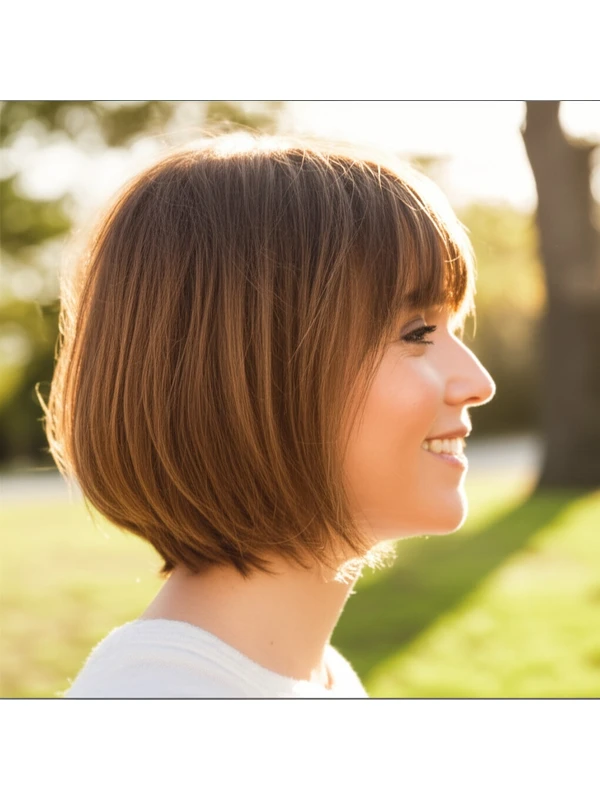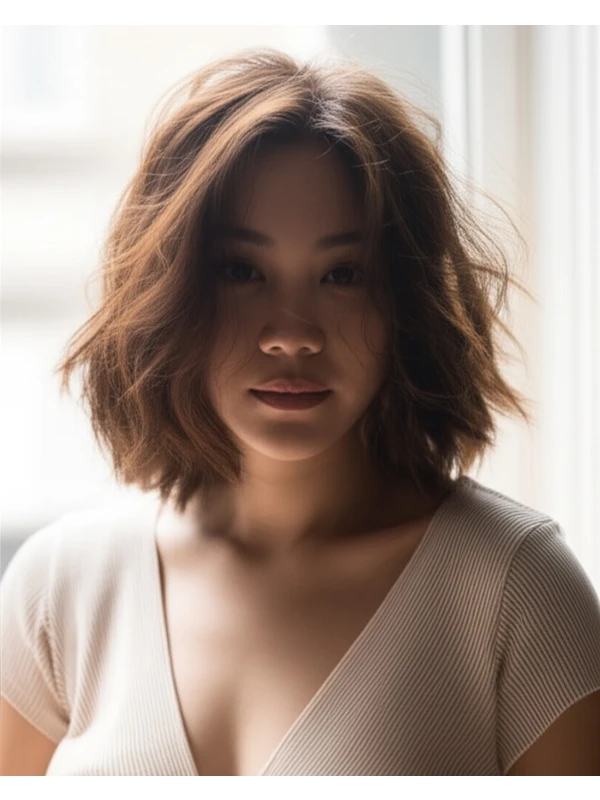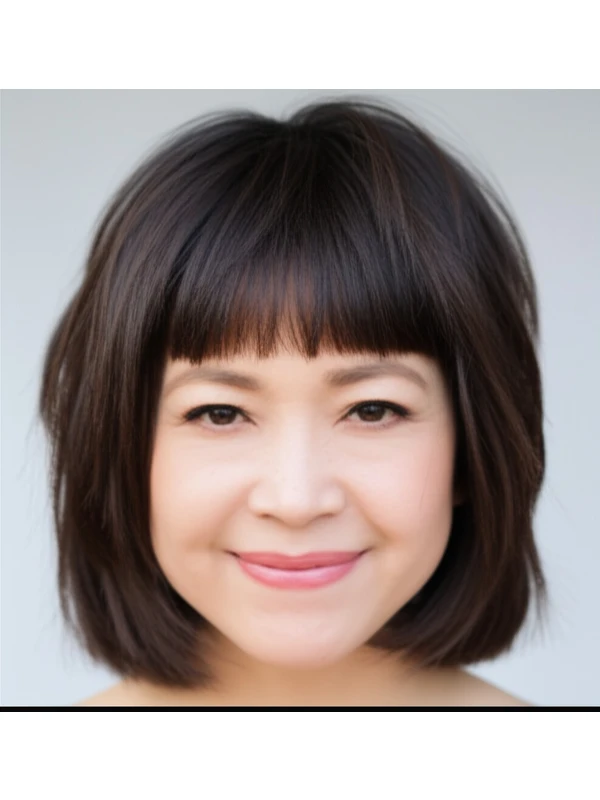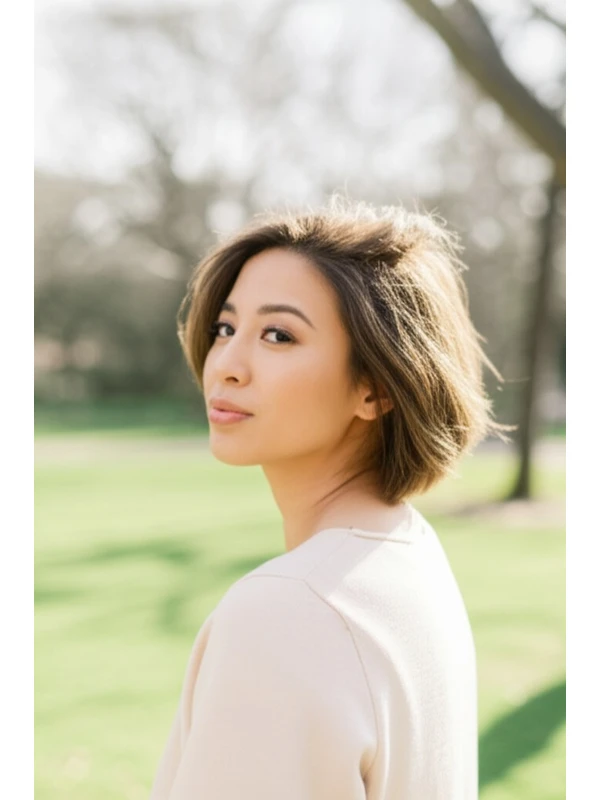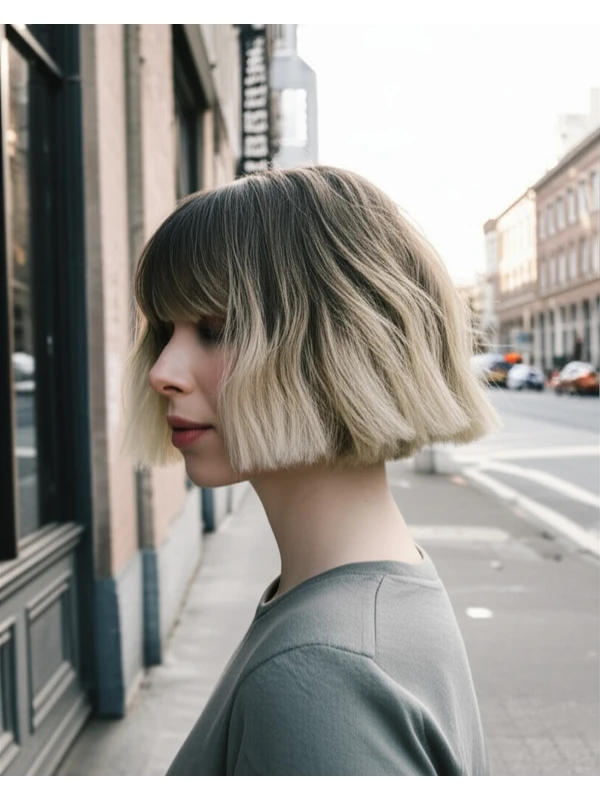#The Shoulder Length Blunt Cut: A Modern Classic
The shoulder-length blunt cut is a timeless hairstyle that's experiencing a major resurgence. It’s more than just a haircut; it’s an attitude – confident, chic, and effortlessly cool. This guide will break down everything you need to know about this versatile style, from finding the perfect fit for your face shape to keeping it looking its best between salon visits.
#1) Background & Definition: What is a Blunt Cut?
A blunt cut means the ends of your hair are cut straight across, creating a solid line rather than fading or layering. The “shoulder length” portion typically falls between 6-10 inches from the crown of your head – think just grazing the collarbone to slightly below it. It’s all about that clean, impactful edge!
- Key Features: Sharp lines, even ends, minimal graduation (no layers or thinning).
- Typical Length Ranges: 6 - 10 inches from the crown.
- Alternative Names: Collarbone cut, blunt bob (if shorter), one-length haircut.
- Geometry: The shape is primarily defined by its horizontal lines – a powerful visual statement.
#2) Face Shape Fit: Finding Your Perfect Angle
The beauty of the shoulder length blunt cut lies in how it can be adapted to suit different face shapes. Here’s a breakdown:
- Oval Faces: Lucky you! This style looks fantastic on almost everyone with an oval face. The length complements the balanced proportions beautifully. Fringe Option: A curtain fringe or a straight-across bang would enhance this look further.
- Round Faces: The bluntness adds definition and angles, helping to elongate the face slightly. Avoid too much volume at the sides. Fringe Option: Side-swept bangs soften the roundness.
- Square Faces: Softens strong jawlines by adding a touch of softness around the cheekbones. The blunt edge still provides structure but avoids harsh lines. Fringe Option: A wispy, textured fringe works well to break up angular features.
- Heart-Shaped Faces: Balances a wider forehead and narrower chin. This style adds weight at the jawline, creating more symmetry. Fringe Option: Side bangs or a soft, face-framing fringe are ideal.
- Diamond Faces: The blunt cut can soften diamond shapes by balancing wide cheekbones with a slightly softer jawline. Fringe Option: A wispy bang that blends into the hairline is flattering.
- Oblong (Long) Faces: While this style can work, it’s important to consider volume placement. Too much bluntness can elongate the face further. Adding subtle layering or a side part will add width and balance. Fringe Option: A longer, piecey fringe helps shorten the appearance of an oblong face.
#3) Body Proportions & Height Guidance: Tailoring the Silhouette
This cut isn’t just about your face; it plays with your overall silhouette too!
- Petite: A shorter shoulder length (6-8 inches) prevents the hair from overwhelming a smaller frame.
- Average Height: The classic 8-10 inch range works beautifully on most heights.
- Tall: A slightly longer style (closer to 10+ inches) can help balance height and create a more proportional look.
- Narrow Shoulders: Adding subtle volume at the sides with styling techniques or even very slight layering can broaden shoulders visually.
- Broad Shoulders: Keep the cut clean and streamlined – avoid adding too much bulk around the shoulder area.
- Short Neck: A slightly longer blunt cut (closer to 10 inches) can help elongate the neck. Avoid styles that sit directly on your collarbone, as this can accentuate a shorter neck.
- Long Neck: This style is incredibly flattering! The length balances the neck’s length beautifully.
#4) Works Best With Hair Types & Densities: A Texture Breakdown
The beauty of the blunt cut is its adaptability, but certain hair types and densities benefit more than others.
- Straight Hair: This style shines on straight hair – it showcases that crisp, clean line perfectly. Fine to medium density works best; thick hair might need very subtle internal texturizing to avoid bulkiness.
- Wavy Hair: The bluntness emphasizes the natural wave pattern, creating a cool and textured look as it moves. Medium to thick densities work well – be mindful of how waves will affect length.
- Curly/Coily Hair: While possible, this cut requires careful consideration! The blunt edge can create a very defined curl pattern. Shrinkage is crucial to factor in (a 12-inch style might look like 8 inches when dry). Medium to thick density works best; fine hair may lack the volume needed.
- Fine Hair: Can benefit from this cut as it creates an illusion of thickness, but avoid overly heavy products that can weigh it down.
- Medium Density: This is a sweet spot for most variations of the blunt cut!
- Thick Hair: Needs careful layering or texturizing to prevent excessive bulk and maintain shape.
Shrinkage Factor (Curls/Coils): Always account for shrinkage when determining length. What looks like 12 inches wet might shrink down to 8-9 inches dry. Consult with a stylist experienced in cutting textured hair!
#5) Styling Variations: From Sleek to Textured
This cut is surprisingly versatile!
- Sleek vs. Textured: For a sleek look, use smoothing serums and a flat iron. For texture, air dry or diffuse with minimal product – let your natural movement shine through.
- Middle vs. Side Part: A middle part creates symmetry and balance; a side part adds softness and volume.
- Fringe Variations: Straight-across bangs, curtain bangs (longer pieces that frame the face), wispy fringes – all can be adapted to suit different features.
- Occasion Styling:
- Casual: Air dry with a texturizing spray.
- Office: Sleek and straight with minimal flyaways.
- Evening: Add volume at the roots using mousse or a volumizing powder, and consider adding subtle waves with a curling iron.
#6) Maintenance: Keeping Your Shape Sharp
- Trim Cadence: Every 6-8 weeks is typical to maintain the blunt line. Curly/coily hair may need more frequent trims (every 4-6 weeks) due to shrinkage and shape retention.
- At-Home Routine: Gentle cleansing, hydrating conditioner, regular deep conditioning treatments.
- Heat vs. Air Dry: Minimize heat styling whenever possible to prevent damage. When using heat, always use a protectant spray.
- Product Checklist:
- Shampoo & Conditioner (suited to your hair type)
- Leave-in Conditioner (for moisture and detangling)
- Heat Protectant (if using hot tools)
- Smoothing Serum or Oil (for sleekness, especially on straight/wavy hair)
- Texturizing Spray or Mousse (for adding volume and definition)
- Estimated Daily Styling Time: 5-15 minutes, depending on desired style.
#7) Grow-Out Roadmap: The Evolution of Your Style
- Months 0-3: The cut looks fresh and sharp! Maintain the blunt line with regular trims.
- Months 3-6: As it grows longer, consider subtle layering to prevent heaviness or bulkiness. A slight face-framing layer can soften the look.
- Beyond 6 Months: You can experiment with more layers or a slightly different shape as your hair gets even longer.
#8) Color Pairings: Enhancing Your Look
- Cool Undertones (ash blonde, cool brown): These shades enhance the crispness and modernity of the blunt cut.
- Warm Undertones (golden blonde, caramel brown): Add warmth and dimension – especially flattering for those with warmer skin tones.
- Low-Commitment Options: Balayage or highlights can add subtle dimension without a drastic color change. A root shadow can create depth at the roots.
#9) Season & Occasion Guide: Adapting to the Moment
- Spring/Summer: Lighter, brighter colors and effortless styling – think air drying with beachy waves.
- Fall/Winter: Richer tones (chocolate browns, deep reds) and more polished styles – sleek and straight for a sophisticated look.
- Work: Sleek and professional.
- Weddings/Parties: Elevate the style with volume at the roots or soft curls.
- Formal Events: A classic updo showcasing the blunt line can be incredibly chic.
#10) Cost & Time: Investment in Style
- Salon Time: Typically 45-90 minutes, depending on hair density and styling needs.
- Estimated Price Range: Generally falls within a moderate price point—expect to pay slightly more than a basic trim.
#11) Pros & Cons: Weighing the Options
Pros:
- Modern and chic aesthetic.
- Relatively easy to style (depending on hair type).
- Versatile – can be adapted for different face shapes and occasions.
Cons:
- Requires more frequent trims than layered styles.
- Can look harsh if not suited to your face shape or hair texture.
- May require more product and effort to style certain hair types (e.g., thick, curly).
#12) Salon Consultation Script: Questions to Ask
Use these prompts when talking with your stylist!
- "I'm interested in a shoulder-length blunt cut. Can you assess if it will suit my face shape?"
- “How can we adapt the style for [my hair type/density]?”
- "What styling products do you recommend to achieve this look at home?"
- “Can we discuss how the length should be adjusted considering my neck length and shoulder width?”
- "Could you show me some examples of different fringe options that would work well with this cut?"
Disclaimer: This guide provides general hairstyle advice. Individual results may vary based on hair type, texture, density, and styling techniques. Always consult with a qualified hairstylist for personalized recommendations.
